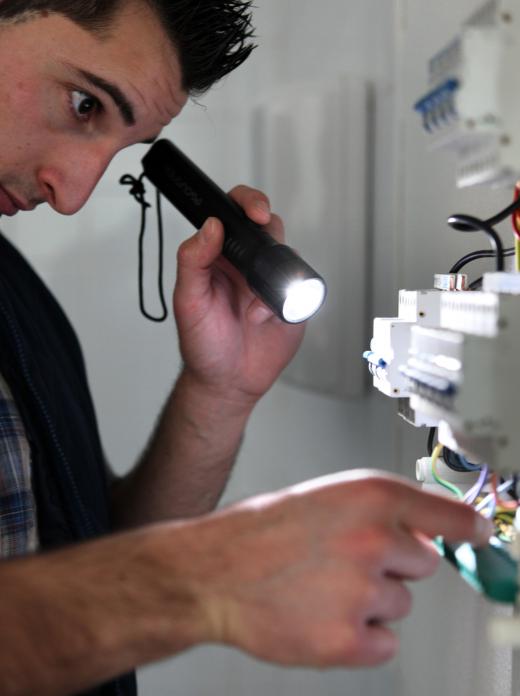Receptacle grounding is an important aspect of safety when dealing with electricity. Grounding ensures that a faulty electrical outlet does not use a person to pass electricity. This problem mainly affects two-prong sockets, and the best method for receptacle grounding is to convert a two-prong outlet to a safer, three-prong style. With a few tools and some careful work, a simple method can make an outlet safely grounded for all to use.
Electricity, by nature, is always trying to find the simplest path to reach the Earth. With improper receptacle grounding, this frequently be through people, often leading to shocks and electrocution. An electrical ground makes a connection from the electrical source to the earth and bypasses people, even if the receptacle, also commonly referred to as the electric socket or outlet, is not properly functioning.

The most common place to find an ungrounded receptacle is with a two-prong wall socket outlet. The easiest way of receptacle grounding is by replacing this outdated socket with an automatically grounded three-prong model. The added third opening is for sending all excess electricity safely into the earth.
The first step in receptacle grounding is to locate the circuit breaker attached to that particular electrical receptacle. This normally is a large metal box with a series of breaker switches. There will be a switch labeled for that particular room or wall that first must be flipped into the "off" position to avoid possible electrical shock. Next, a screwdriver should be used to unscrew the protective plate holding the socket in place, and the system should be pulled out, revealing its wiring. The wiring connected to the outlet then must be unscrewed so that there are two wires coming from the wall, most likely a red wire and a white wire.
Next, after a three-prong outlet has been purchased, the red wire, also known as the hot wire, should be attached to the brass screw on the new outlet. The white wire, or neutral wire, then must be attached to the silver screw. The outlet will have a green ground wire hanging from it at this point. The new outlet should come with a corresponding green screw, or one can be purchased. This green screw is screwed into the back of the outlet box, and the green wire must be attached in order to send the electrical current to the Earth and not through human hands.
In order to complete receptacle grounding, the wall outlet must be screwed back into place. Next, the switch in the circuit breaker must be flipped to the "on" position. A circuit tester, properly inserted into the prong holes, will ensure that the socket is grounded properly. If not, the process should be repeated and all work should be double-checked.
